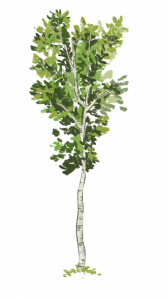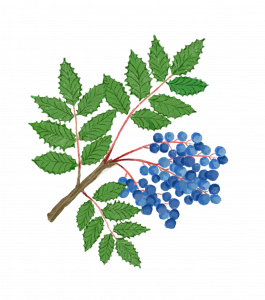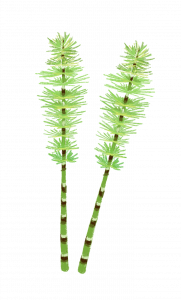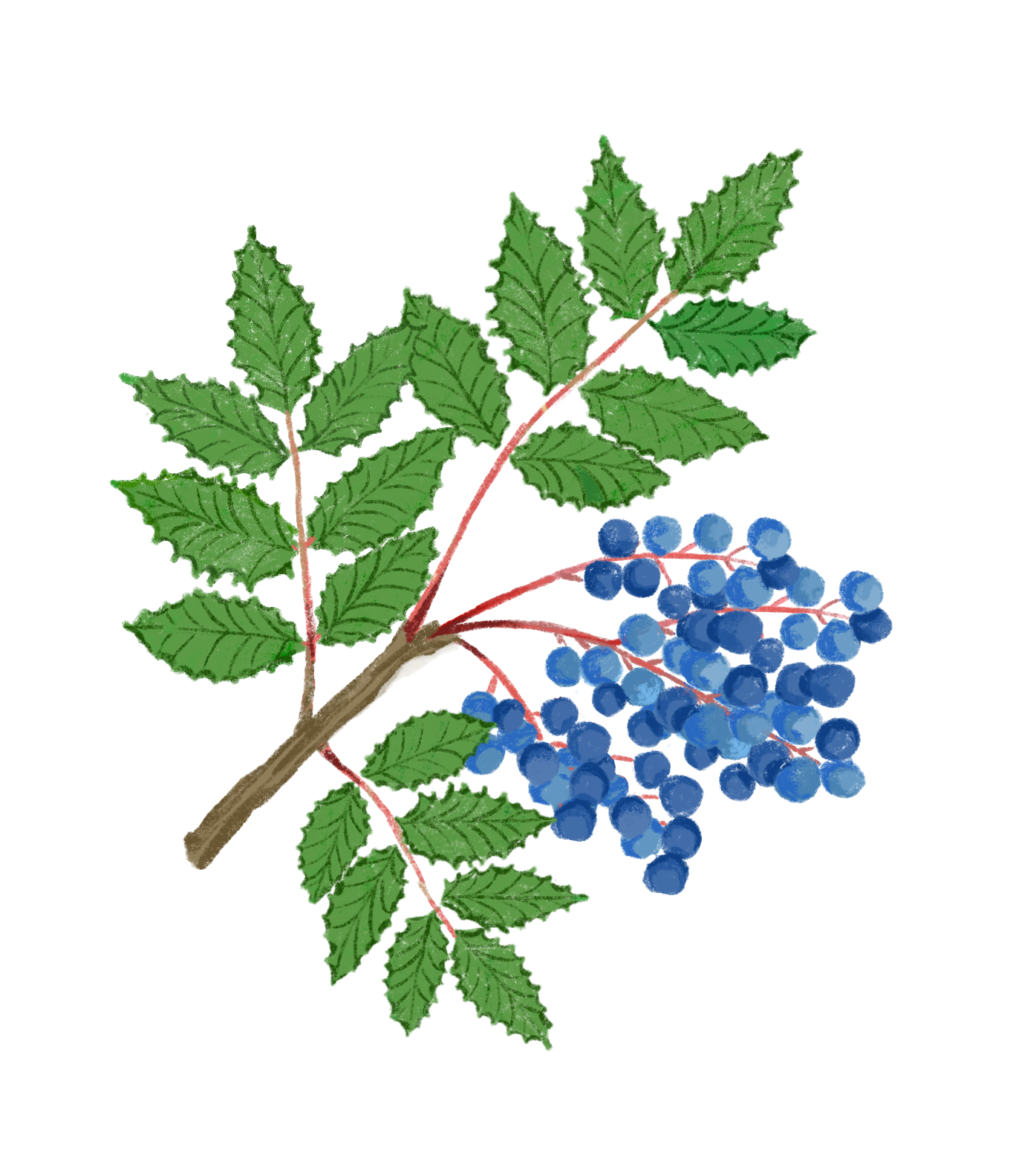by Jacob Mattie, Peak Associate
Burnaby Mountain — whose base is named Lhuḵw’lhuḵw’áyten by the Squamish people in reference to its groves of Arbutus trees — hosts a variety of life. Currently designated as a conservation area, Burnaby Mountain is recognized as both provincially and ecologically significant.
Each plant listed here has a range that spans the traditional territories of numerous Indigenous nations, and so is known by many different names. In this article, we will use the common English names and the relevant binomial nomenclature. It should be noted that the majority of human interaction with these plants throughout history has been under different identifications than those used here.
I am neither a botanist nor a doctor, so please use your discretion, and respect the plants if you choose to interact with them. Medicinally, it should also be noted that, just because people throughout history have supported certain traditions, this does not validate them. Put quaintly by the weed science department of Purdue University: “There are historical reports of ancient Romans eating [horsetail]’s tender young shoots for medicinal purposes; however, the Romans also thought lining their aqueducts with lead was a good idea.”
With this all said; let’s learn about some plants.
Sword Fern (Polystichum munitum):

The sword fern is an incredibly old and prolific species. Despite being considered a weed by most industrial agriculturalists, the fact remains that the sword fern is exclusively native to the coastal areas of North America. Its range extends along the coastline of Alaska down to just above Mexico.
This plant can be identified by its long fronds, stretching up to 1.5 meters from the base. Leaves are attached by a small stem and grow in an alternating pattern. These fronds typically live for several years. The leaves (known on ferns as pinnae) are attached by a small stem in an alternating pattern, with a small protrusion resembling a sword hilt — hence the name.
The rhizomes (a type of underground structure from which the plant can grow underground roots or stems, like a ginger root) are difficult to access and prepare, but they have been cooked and peeled as a starvation food source by many Indigenous peoples. Its fronds are plentiful and have a naturally non-stick coating, leading to their historical use in beddings, basket linings, cooking pits, and as food preparation areas. Medicinally, its rhizomes, stems, and young leaves have been selectively eaten or distilled to reduce pain — ranging in severity from sore throats to childbirth — as well as a remedy to diarrhea. Its spores have been used to treat burns and the itch caused by stinging nettles.
Paper Birch (Betula papyrifera):

Paper Birch can be most easily recognized by their distinctive bark — whitish in hue, and generally smooth and flaky. The trees grow moderately quickly and reach maturity at around 70 years of age, whereupon their bark begins to peel into paper-like sheets.
During the fall, the many leaves of birch trees turn a bright yellow and make for a delightful fall ambiance.
Paper birches are considered “pioneer” species, which means they are among the first to grow after an area has been cleared. In this case, they are replacing the sections of Burnaby Mountain that were clear-cut in the 1940s.
Paper birch trees are a staple of the ecosystem and offer a number of uses. The leaves they shed in the fall serve to enrich the soil and make it more tenable for other plant life. Although low in nutrition, the sheer number of leaves they produce make the birches an important food source for deer and moose throughout their range. Their bark is eaten by Luna moth caterpillars, beavers, and porcupines. Various birds are drawn to the seeds and the nesting potential offered by the tree cavities.
The paper-like bark, from which they get their name, has been used to carry written messages by people throughout history and has been used to build lightweight and robust canoes, leading to the paper birch’s other name — the canoe birch.
Paper birches are susceptible to damage and bleed great quantities of sap when cut. This sap can be reduced to a syrup and has also been used in the past to make birch beer.
Holly-Leaved Barberry (Mahonia aquifolium):

If you keep your eyes open near the Diamond Alumni Centre, you might notice clusters of blue berries tucked around thorny leaves. These are holly-leaved barberry plants, also known as Oregon Grapes. While they are technically edible, students in need of a snack might be disappointed. The berries are very acidic in flavour and contain large seeds.
The plant itself is often grown ornamentally. Although it is evergreen, its appearance changes dramatically throughout the seasons. In the spring, it flowers brightly in yellow clusters, which ripen in the summer to the blue berries. The leaves finish with a deep burgundy in the fall, a colour which they carry throughout the winter.
Pollinators find food in this plant’s springtime flowers, while birds and other wildlife eat the berries (which have been described as being excellent for making jellies). The berries can be used to make a purple dye, and the inner bark of the larger stems & roots yield a yellow dye.
Horsetail (Equisetum arvense):

Horsetails are incredibly common, old, and widespread. They’re considered “living fossils,” meaning they’ve remained relatively unchanged for hundreds of thousands of years. Fossil records show they were the dominant form of plant life during the Devonian era, predating the existence of fish, insects, reptiles, and mammals. Turns out it’s the ancestors of horsetails that have turned into the coal we use today.
Horsetails have a distinctive appearance — a tall segmented stem, with rays of hair-like leaves branching out. It is a prolific and resilient grower, often found in large clusters. Because of this, it’s often considered a weed, despite being fairly forgiving to other plants. With decent soil, water and proper drainage, most other plants can still establish themselves and grow alongside horsetail, meaning issues over a horsetail infestation are mainly an aesthetic concern.
Practically, horsetail has a huge number of uses. It’s comprised of over 35% silica, giving it a crusty sort of texture, making it particularly well-suited as an abrasive. Hikers and others have used it as a cleaning brush for cookware, woodworkers used it to sand projects, and it’s been used to polish pewter and other metals, leading to one of its many colloquial names; pewterwort.
Its shoots have been cooked in soups and stir fries by Indigenous and Japanese people, but its safety as a food source is under some controversy. Horsetail is a diuretic, contains nicotine, and breaks down thiamine (Vitamin B), potentially leading to a deficiency and permanent liver damage. Medicinally, its high silica content can be used to promote the healing and strengthening of connective tissues, as well as promote bone growth.




